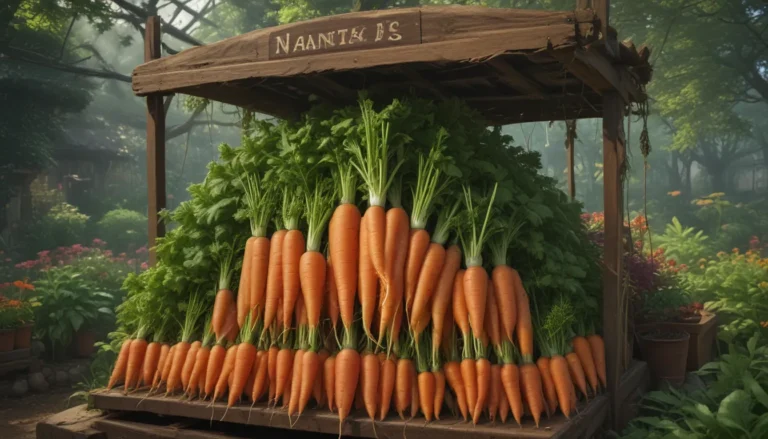A Comprehensive Guide to Growing and Caring for Bonsai Fruit Trees

Are you ready to take your bonsai skills to the next level? How about growing a bonsai tree that not only showcases your expertise but also produces delectable, full-sized fruits? The art of cultivating bonsai trees goes beyond nurturing miniature plants – it involves shaping full-sized species into exquisite creations that bear normal-sized fruits.
In this in-depth guide, we will explore the exciting world of fruit bonsai trees, from selecting the right species to caring for these unique plants. Whether you dream of harvesting tiny apples or miniature lemons, we’ve got you covered. Let’s dive in and discover the secrets of growing and caring for bonsai fruit trees.
What You’ll Learn
- A Quick Fruit Bonsai Overview
- Species to Select
- Care
- Pruning
Are you ready to embark on your bonsai fruit tree journey? Let’s get started!
A Quick Fruit Bonsai Overview
While any tree species can be grown as a bonsai, certain varieties are better suited for fruit production. Although bonsai fruit trees may not yield the same amount of fruits as their full-sized counterparts, they still offer a unique and rewarding experience.
It’s essential to understand that bonsai fruit trees share the same genetics as their full-sized counterparts, which means they are capable of producing full-sized fruits. Unfortunately, there is no way to alter the size of the fruits a tree produces through horticultural practices.
If you’re looking to cultivate fruit bonsai with petite fruits, consider species like crabapples or blueberries that naturally bear small fruits.
Species to Select
When it comes to selecting fruit tree species for bonsai cultivation, there are several excellent options to choose from. Crabapples, cherries, quince, key limes, and Meyer lemons are popular choices for bonsai enthusiasts. If you’re up for a challenge, pomegranates, oranges, apples, and persimmons can create a stunning visual contrast with their large fruits and tiny trees.
Don’t feel limited by the common options – you can experiment with other species like durians if you’re feeling adventurous.
Care
Caring for a fruit tree bonsai is similar to caring for traditional bonsai trees, with a few important differences to keep in mind. Fruit-bearing bonsai trees require proper sunlight, water, and fertilization to thrive and produce healthy fruits.
It’s crucial to understand that certain fruit tree species require a period of dormancy to produce fruits. Some trees need a specific number of chill hours to initiate fruit production, so be mindful of the climate requirements for your chosen species.
Make sure to provide adequate sunlight to your bonsai fruit tree, as insufficient light may hinder fruit development. While most fruit trees need to be grown outdoors, certain citrus varieties like lemons and oranges can thrive in a warm, sunny indoor environment.
Feeding
Proper fertilization is essential for the health and vitality of bonsai fruit trees. Use a general-purpose bonsai fertilizer that provides essential nutrients for optimal growth. Slow-release fertilizers are convenient and effective for maintaining the nutrient levels in your bonsai tree’s substrate.
Remember to fertilize your bonsai tree according to the specific requirements of the species you’re growing. Avoid applying fertilizer in the weeks leading up to fruit maturation, as this can lead to premature fruit drop.
If you notice that your fruits are small or underdeveloped, consider testing the potassium levels in your substrate. A potassium deficiency can impact fruit formation, so adding a potassium-rich supplement like Langbeinite can help improve fruit quality without increasing salt levels.
Pruning
Pruning is a fundamental aspect of bonsai tree care, especially for fruit-bearing varieties. Proper pruning helps maintain the shape of your bonsai tree and encourages healthy fruit production.
When pruning your fruit bonsai tree, consider the specific pruning requirements of the species you’re growing. For example, blueberries produce the best fruits on canes that are one to four years old, so regular pruning is necessary to ensure consistent fruiting.
For apple trees, winter pruning is essential to create a balanced shape that supports fruit development. Maintain a sturdy trunk and strategically prune branches to prevent overcrowding and promote optimal fruit growth.
By understanding the unique pruning needs of your bonsai fruit tree, you can create a harmonious balance between tree aesthetics and fruit production.
Fruit Trees Make Stunning Displays
Bonsai fruit trees are not only a testament to your gardening skills but also a visually striking addition to any space. While they require a bit of extra care and attention, the sight of full-sized fruits dangling from miniature branches is a truly remarkable experience.
We invite you to share your bonsai fruit tree growing journey with us. Let us know which species you’ve chosen to cultivate and feel free to ask any questions you may have along the way.
If you’re looking to expand your bonsai collection further, consider exploring our other guides on growing unique bonsai varieties:
- How to Grow a Ginseng Ficus Bonsai
- How to Grow and Train Dracaena Plants as Bonsai
- How to Mix Your Own Bonsai Soil to Grow Healthy Plants
Thank you for joining us on this bonsai fruit tree adventure!
In conclusion, cultivating bonsai fruit trees is a rewarding and fulfilling experience that allows you to enjoy the beauty of nature in miniature form. By selecting the right species, providing proper care, and mastering the art of pruning, you can create stunning displays of fruit-bearing bonsai trees that will captivate and delight all who see them. Happy growing!





